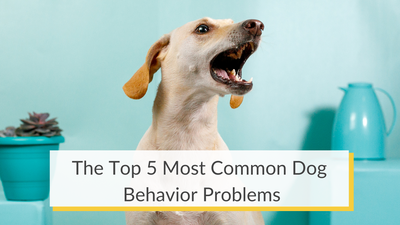A small nibble of hot dog helped launch a new era of appreciation for the emotional lives of dogs. Bits of hot dog were the primary reward offered by neuroscientist Gregory Berns in his early “doggy fMRI studies”. During these studies, Berns was able to isolate a “reward system” within the brain activity of dogs.
For this first step into the psychology of dogs months of extensive trial and error went into the initial training process. After all, MRIs are noisy, intimidating machines for us so it’s easy to imagine that getting test dogs to the point where they are comfortable and relaxed inside one was a giant hurdle.
The See Test
Embed from Getty Images
fMRI or Functional Magnetic Resonance Imaging is a neurological testing process that, in simple terms, measures the blood flow and activity in specific regions of the brain. In fMRIs of people’s brains an area referred to as the caudate region shows activity when we experience a positive emotion, it is often referred to as the “reward center”. The same caudate region is present in the brains of dogs and initial tests showed activity in the area when dogs saw the signal for a treat, but not when they saw the no-treat signal.
The Smell Test

Then Berns and his team took things further; it was time to find out if they could gain insight into the way that dogs process scent. The team asked the dogs to lie down in the scanner while exposing them to various smells. The first set was from humans, either their family members or strangers. The next from dogs, either dogs they lived with or unfamiliar dogs.
Berns explains, “We wanted to understand how dogs recognize other people and dogs in their households.” He continued,” In this case, the reward system only seems to activate in response to the smell of a familiar human, which is pretty amazing.”
The Hear Test
![]()
Budapest, Hungary was the next hotspot for doggy psychology when neuroscientist Attila Andics began his own exploration into dog brain scans. Andics and his team at Eötvös Loránd University were able to prove what several other fMRI studies had previously hinted at- That dogs have a language center in their brains that is eerily similar to ours, processing word meaning and word tone on opposite sides of the brain. It’s believed to be a trait exclusive to our two species.
Andics dug deeper, he and his team wanted to learn if dogs can sense our emotions-they were not disappointed. During fMRI testing they watched the left hemisphere of the dogs’ brains become active when they heard meaningful phrases, like “Good Boy” while remaining inactive during neutral ones- suggesting that dogs interpret the meaning of words in the left hemisphere.
Related Post: Puppy Talk 101 - How to Communicate with Your Pup

Scientists also spoke using meaningless or neutral words for the next phase of the study and the findings became even more impressive. Activity registered in the right half of the subject dog’s brains whenever emotion was added to the scientist’s voice tone. Giving us the first definitive answer to the question, can dogs sense people’s emotions?

Love is a human emotion that is thought to be somewhat detectable using current fMRI studies because the reported feeling typically presents in our brains along with heightened levels of oxytocin. Among other things, oxytocin is one of the chemicals produced by a new mother’s brain when looking at their infant. It’s a huge part of that warm and fuzzy feeling that we get when we are looking at or hearing the sound of something we adore.
Related Post: 10 Ways to Show Love to Your Dog on National Pet Day
Amazingly, thanks to several studies published over the past few years we now have proof that the mere sight of humans, particularly a favorite human, produces similar oxytocin production in dogs. Even a picture of a “beloved” human can produce the reaction.

The connection between the overall contentment of our furry friends and the sights, sounds and smells that surround them is indisputable and technology is beginning to catch up with the findings. Take the invention of doggy spas with aromatherapy oils or gadgets and apps like Furbo Dog Camera. Furbo allows you to verbally check-in with your pup while you’re away, you can also see her and throw her a delicious-smelling treat.
Related Post: 5 Reasons Every Dog Needs a Furbo Dog Camera
While we are still learning to fully interpret the meaning of oxytocin presence in a dog’s brain and the overall meaning of each study, science has almost certainly proven that dogs actually experience the pleasure they demonstrate when they greet us.
















